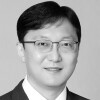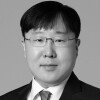Unlike the US system, the South Korean patent regime does not allow continuations or continuation-in-part filings, nor does it provide a terminal disclaimer mechanism to address double patenting. Instead, Korean patent law relies on a divisional filing system that imposes strict limits on obtaining multiple patents for overlapping subject matter.
1 Overview of divisional practice in Korea
1.1 Timing requirements for divisional filings
Under Article 52 of the Korean Patent Act (KPA), an applicant may file a divisional application based on the original disclosure of a parent application:
At any time before the examiner issues a first office action (a notice of preliminary rejection or a notice of allowance);
If the applicant has received a notice of preliminary rejection within the period designated for submitting a response thereto;
If the applicant has received a final rejection at the time of requesting continued examination or lodging an appeal against the final rejection; or
Within three months of receiving the notice of allowance but prior to paying the registration fee of the parent.
1.2 Common uses and objectives of divisional applications
Traditionally, divisional applications were used mainly to address unity of invention objections. The applicant would delete the non-unitary claims from the parent and pursue them in a divisional.
Although Korea does not have a continuation or continuation-in-part application system, a divisional application can serve as a de facto continuation of the original application. By filing a divisional, the applicant can continue the prosecution of certain aspects of the invention on a separate track.
1.3 Strategic considerations in divisional filings
In Korea, applicants may use divisionals proactively as a strategy to reopen or extend prosecution on aspects of an invention as follows.
1.3.1 Broader claim drafting after final rejection
Once a final rejection is issued in the parent application, Korean practice sharply limits amendments – the applicant may only narrow claims, correct obvious errors, or remove inconsistencies. If a claim needs to be substantially rewritten or if new claims (supported by the original disclosure) are to be added after the final rejection, a divisional may serve as a continuation application through which such broader or new claims may be pursued.
1.3.2 Pre-appeal divisionals to preserve prosecution options
In Korean practice, if an appeal of a patent application is unsuccessful, the applicant does not have any further opportunities to amend the claims and continue the prosecution after the adverse decision. In this regard, by filing a divisional application concurrently at the time of lodging an appeal against a final rejection, the Korean divisional application system can be used as a vehicle for reopening the prosecution even if the appeal is unsuccessful.
1.4 Recent developments in divisional practice in Korea
1.4.1 Revision of examination order
Effective January 1 2025, the Korean Intellectual Property Office (KIPO) has amended regulations to change the examination priority of divisional applications.
Under the previous regime, the examination timing of divisional applications was determined based on the parent application’s examination order. This caused significant delays in processing regular applications and occasionally resulted in divisional cases being examined before the completion of the parent case prosecution, especially when a divisional was filed in parallel with an appeal against a final rejection of the parent application.
The amendment addresses these issues, with divisional applications now being examined according to the order in which a request for examination of the divisional application itself is submitted.
1.4.2 Introduction of deferred examination for divisionals
Recognising the extended product development timelines in industries such as telecoms, pharmaceuticals, and biotech, the KPA has been amended to allow deferred examination of divisional applications.
Effective July 11 2025, applicants may request deferred examination of a divisional within nine months from the date of the examination request. The commencement of substantive examination may then be designated for any time from two years after the request date up to five years from the filing date of the parent application.
2 Double patenting under Korean patent law
While divisional applications can be used to continue prosecution, such divisionals must claim an invention substantially different from the parent. Otherwise, the KIPO will reject the divisional for double patenting.
Korea’s double patenting framework for divisionals has remained consistent in recent years, with no significant legislative or procedural updates. The relevant standards continue to be governed by Article 36 of the KPA and long-standing Supreme Court precedents.
2.1 Statutory basis: Article 36 of the KPA
Article 36(1) of the KPA stipulates that when two or more patent applications are filed for the same invention, only the application with the earliest filing date may be granted a patent. If two or more patent applications concerning an identical invention are filed on the same day, the patent may be granted only to the applicant determined by an agreement among all the applicants. If no such agreement is reached, none of the applicants may obtain a patent (Article 36(2), KPA).
Under Korean patent practice, a divisional application containing a claim identical or substantially identical to that of its parent case is subject to rejection under Article 36(2) of the KPA.
2.2 Court rulings on double patenting cases
The Korean Supreme Court has clarified the legal standard for determining the identicalness of claims under Article 36 of the KPA: “Even if there exists a difference between the two inventions with respect to the technical constitution, they are deemed substantially identical to each other when such difference is no more than a mere addition, deletion or modification of a well-known or commonly practised technical means, which does not produce any new effect” (see, e.g., Supreme Court Case No. 2002Hu2778, decided on March 12 2004).
Based on the above ruling, the Korean Supreme Court has determined that differences in the category of invention alone are insufficient to establish a distinction between inventions, and that the identicalness of inventions must be determined on a case-by-case basis. Specifically, the Supreme Court held that an invention regarding a method for regenerating lost wax and a device for performing the method, each filed on the same day and granted as a patent and utility model respectively, were identical inventions (Supreme Court Case No. 2005Hu3017). The Supreme Court also held that a compound invention and a method for preparing the compound are identical inventions where they are based on the same technical idea (Supreme Court Case No. 2007Hu2797).
Furthermore, the Intellectual Property High Court rendered a decision that a divisional patent whose scope encompasses that of its parent patent is deemed substantially identical to the parent patent and, thus, is invalid due to double patenting because both patents are based on the same technical idea and the constitutive differences between the two patents do not produce any new effect (Intellectual Property High Court Case No. 2017Heo1021, rendered on October 12 2017).
2.3 Risk of double patenting in divisional applications
The KIPO’s Examination Guidelines explain that two inventions are considered to be substantially identical when they differ only in non-essential matters without substantially affecting the concept of the inventions. For example, simple differences in expression, recognition of the effects, purpose, or use, or simple modification of the invention’s constitution are all recognised as potentially leading to a double patenting rejection.
Therefore, even if the categories of the inventions differ from each other, a rejection based on double patenting may arise for a parent and a divisional application that fail to satisfy the above standards set forth in the KIPO guidelines.
In this regard, in a case where two applications for the same invention were filed on the same date and granted, and one registration was later abandoned, the Korean Supreme Court held that the abandonment had no retroactive effect and therefore could not cure the invalidity ground under Article 36(2), resulting in both patents being invalidated (Supreme Court Case No. 2005Hu3017).
Accordingly, if during the prosecution of a patent and its divisional application a double patenting rejection is not raised and the applications are granted after amendments addressing other grounds for rejection, a ground for invalidation due to double patenting may still exist after registration.
2.4 Practical approaches to double patenting issues
For the reasons explained above, when filing a divisional application in Korea, it is important to make the claims of the divisional and the parent applications different from each other in substance to avoid a double patenting rejection.
In addition, under Korean law, it is generally preferable to prosecute inventions that have the same technical idea, such as a product invention and a corresponding method invention, within a single application to avoid double patenting issues.
Korean practice does not provide any system or mechanism analogous to the US terminal disclaimer (for the obvious reason that there is no term difference between the two in principle). Therefore, double patenting rejections issued against the parent application and the divisional application may be overcome only by deleting the rejected claims from one of the applications or amending the claims of one or both of the applications to be distinguishable from each other.
If both a parent application and its divisional are granted without a double patenting rejection and the invalidity issue due to double patenting is raised later during litigation or trial, it may be possible to consider filing a correction trial to amend the claims of one of the patents.













